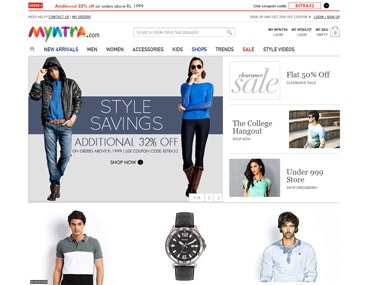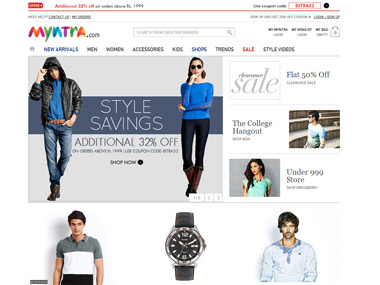Take a picture of your friend’s shirt that you love, and Myntra will find it, or a close match. After killing its web presence in May in favour of an app-only platform, a move lauded by many but seen as ahead of time, Myntra is all set to take its user experience to the next level. It wants to give shoppers on its mobile app a better engagement experience by allowing them to follow friends and brands, like, comment, share and buy products, according to a report in the Economic Times. Social media has inspired a new kind of shopping — which is based on peer-to-peer sharing of content, so a shoppable social network is certainly the lucrative best of all worlds. The idea is to help convert traffic into sales with the help of Myntra’s social media platform, push notifications, time-and location based marketing and image recognition technology. According to this report in Business Standard, SMS and push notifications have eight times higher responses from consumers compared to emails, which means higher conversion and engagement. The idea is to become the Facebook of fashion rather than just offering discounts and flash sales so that users keep coming back to the app. In other words, make e-shopping more like a community activity where you can see what others are buying, what the new trends are and make the online shopping experience more social by telling the buyers what others are doing, gauging the customer’s behaviour and accordingly creating products. The idea is simple: An intelligent algorithm will keep track of a buyer’s likes and dislikes, to make the experience more personalised. The increased engagement induces brand loyalty, and impacts user retention. [caption id=“attachment_2109317” align=“alignleft” width=“380”]  Representational image[/caption] Since mobile enables a much more targeted and personalised marketing merchants can also leverage technology for image shots to catalog their products. Myntra plans to introduce features such as a virtual wardrobe with pictures of users’ clothes and image searches. The latter works by subscribers taking a photo of something they like and using that to search for something similar. For instance, shoppers are not interested in all lines and ranges that are available on Myntra. The app gives users an opportunity to search only for relevant garments that match the shopper’s tastes. Currently, for consumers on-the-go, shopping through a mobile device is a benefit but the screen size of phones and the app storage space acts as a negative. Having said that, user engagement is key for growth. If the technology does allow users to swipe at hundreds of products, look at videos and images, take a 360 degree point of view, share with friends and even talk to experts and get advice in terms of outfit for parties, outings, etc, Myntra may perhaps manage to get on board the particular segment of consumers who prefer to shop through the desktop. There is no doubt that a mobile is a far more personal device than a desktop — Everything from your location to your social circle to your waking and other habits & preferences. However, as I have said earlier, the app should support the overall brand experience, not be an experience that sits detached from other touch points such as the website, even if it is an optimised mobile site since a majority of the searches occur via a mobile search engine, thereby proving that mobile websites are an important part of customer engagement. According to a study conducted by ICM Research in the UK, a majority of the customers prefer to interact with retailers through their mobile websites and only download an app if they are incentivised to do so or if they are regular shoppers. So going app-only makes sense when you can provide the user a greater and better experience, which is otherwise not possible on the web platform.
Myntra plans to introduce features such as a virtual wardrobe with pictures of users’ clothes and image searches
Advertisement
End of Article


)

)
)
)
)
)
)
)
)



